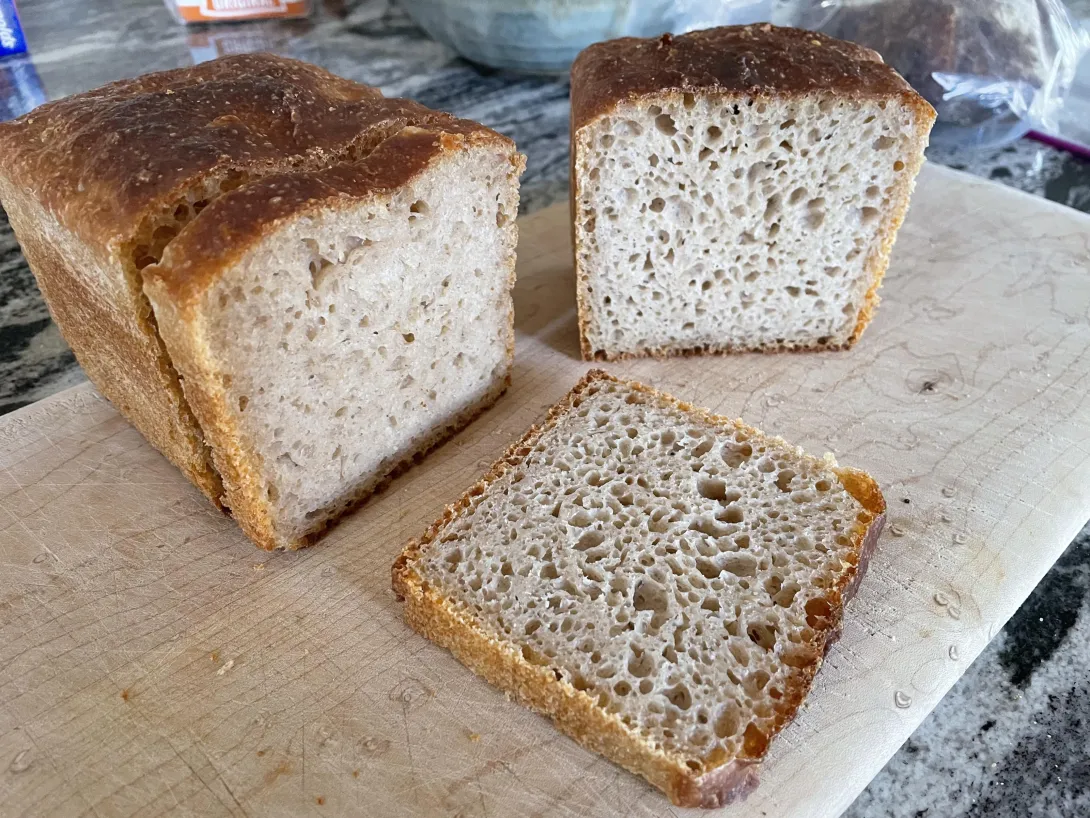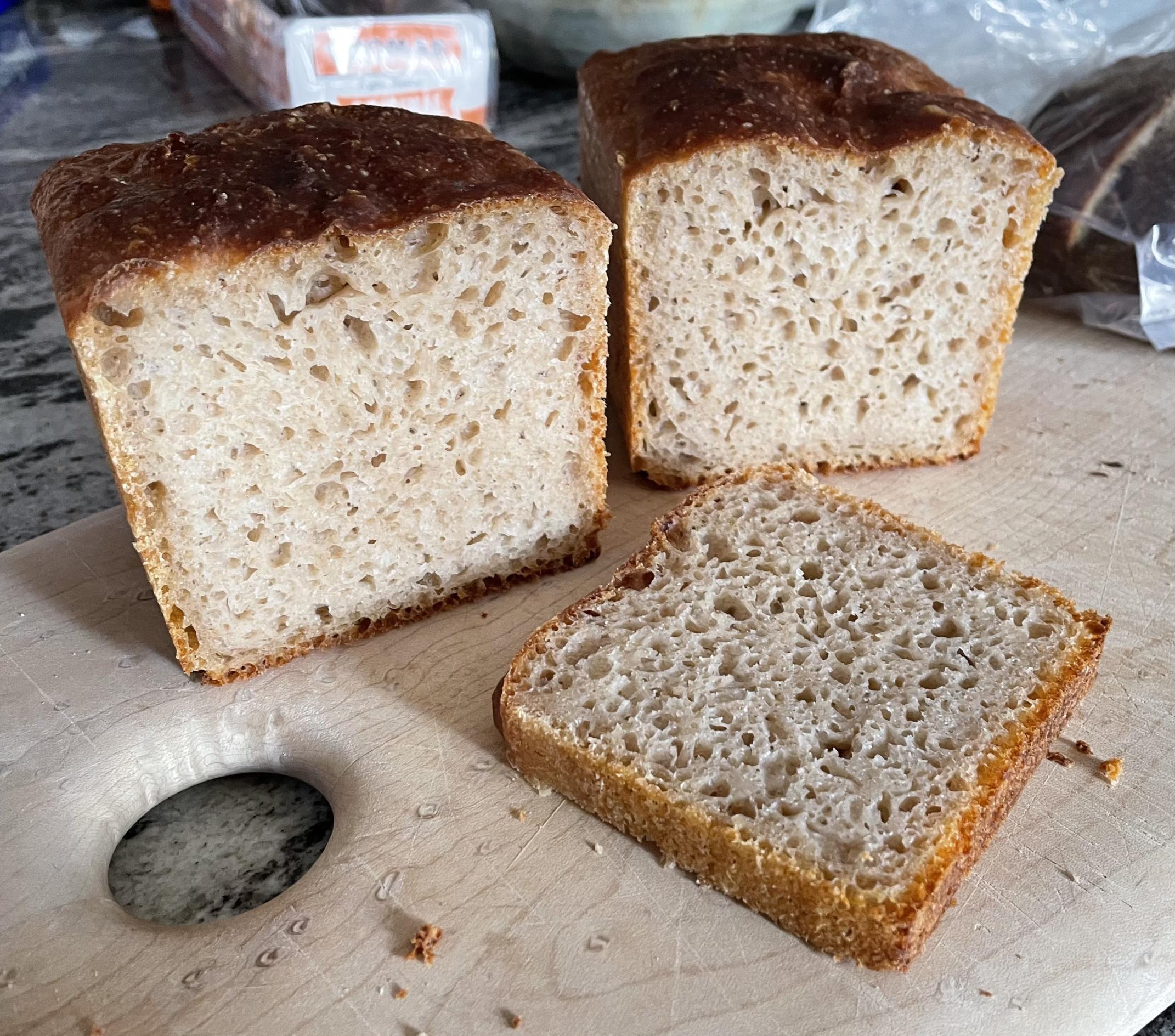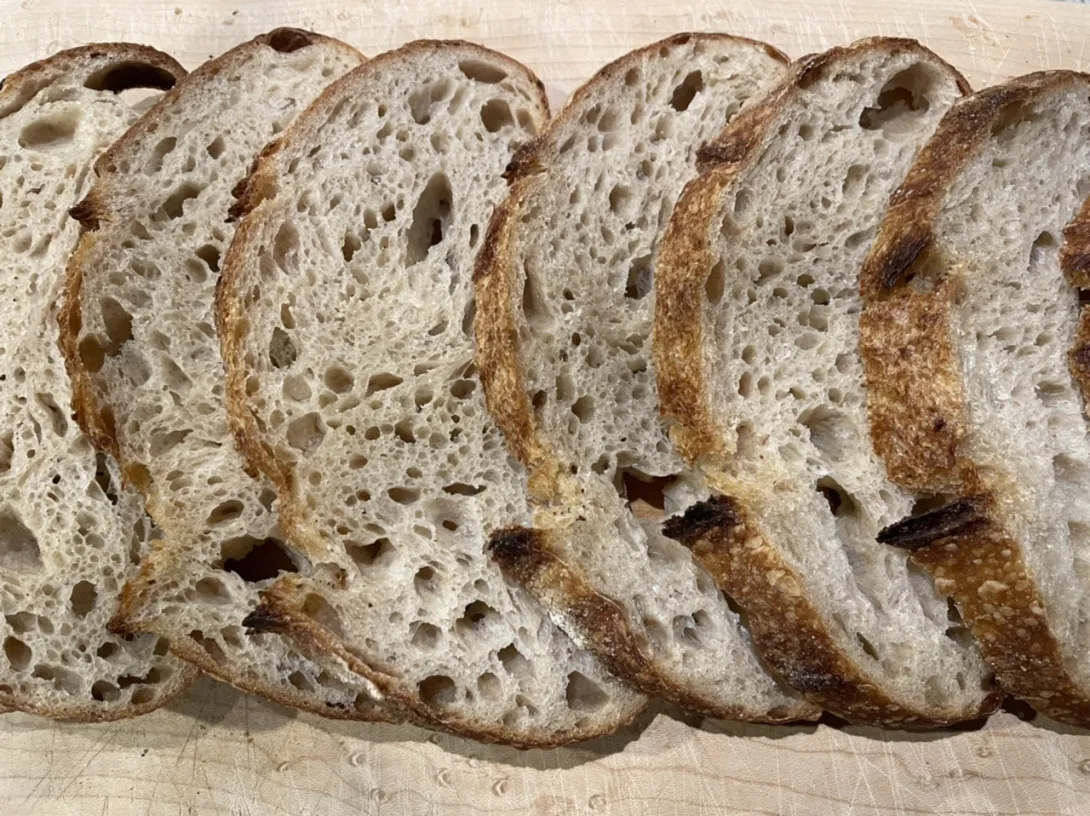MTloaf's blog
Another version of the no levain no knead bread.
I have been switching my limited repertoire of breads over to the "Don't be a bread hostage" way of doing it from the King Arthur website. It has certainly simplified bread making for me and I really like how this recipe makes a more manageable high hydration bread to work with and produces a very soft and fluffy crumb.This is the Trevor Wilson recipe for cranberry spelt bread that I made a few changes to approximate a compromise of both recipes.
Free the Hostages
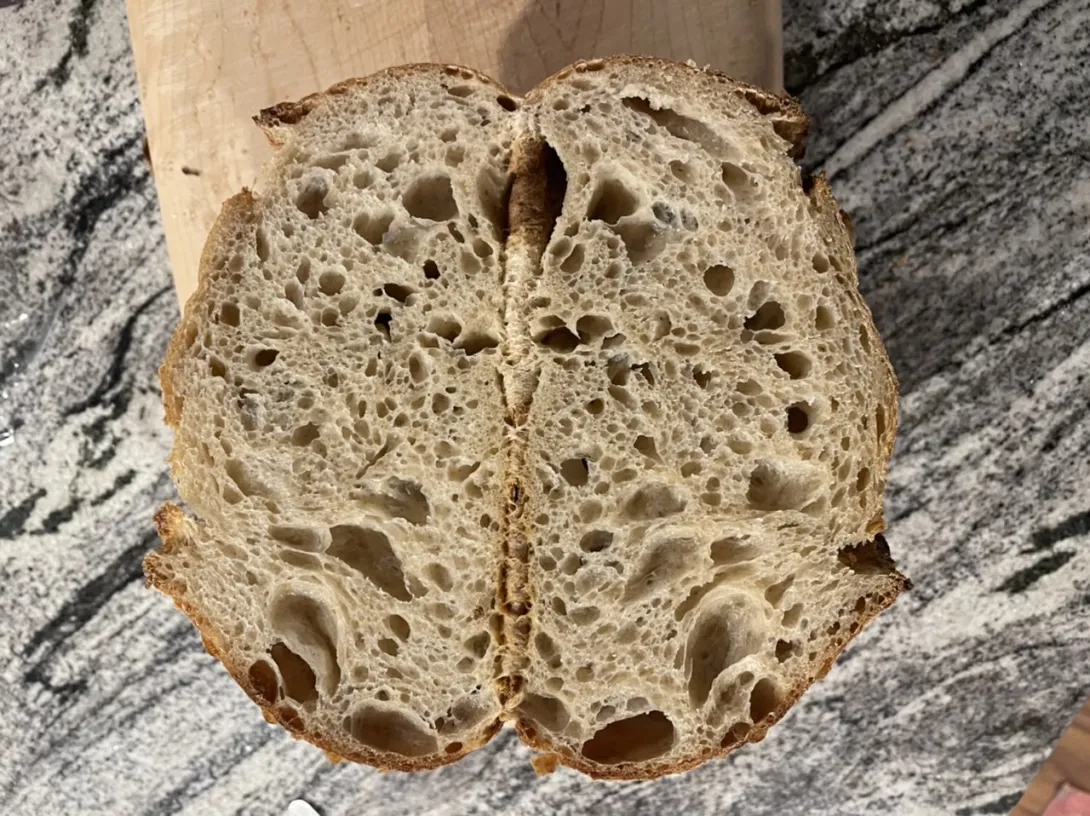
This recipe was brought to my attention in a recent post here with a link to the King Arthur blog post.
https://www.kingarthurbaking.com/blog/2020/04/06/dont-be-a-bread-hostage
Yeast water, home milled, whole wheat, pan loaf
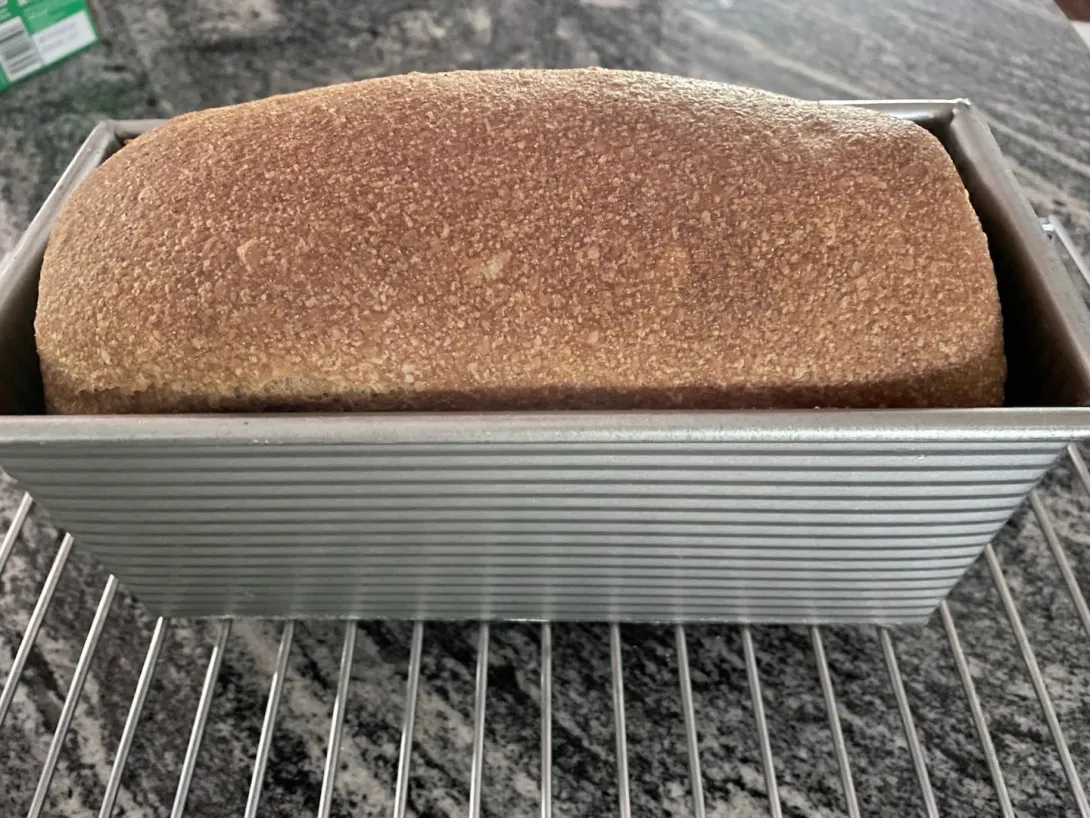
This just happens to be the softest, lightest, tallest, least sour WW pan loaf I have ever made. Something I wasn’t sure was possible with my home milled grains. I am not sure I can technically say it’s 100% WW because I sifted out 10% of the bran with a 40# screen but only out of the flour used in the final mix. I left the bran in for lthe two stage levain. This was my first attempt to use yeast water for whole grain after reading something Dabrownman wrote here years ago about how it would lighten up whole grain loaves. Indeed it does!
- Log in or register to post comments
- 14 comments
- View post
- MTloaf's Blog
Supreme Hot Dogs
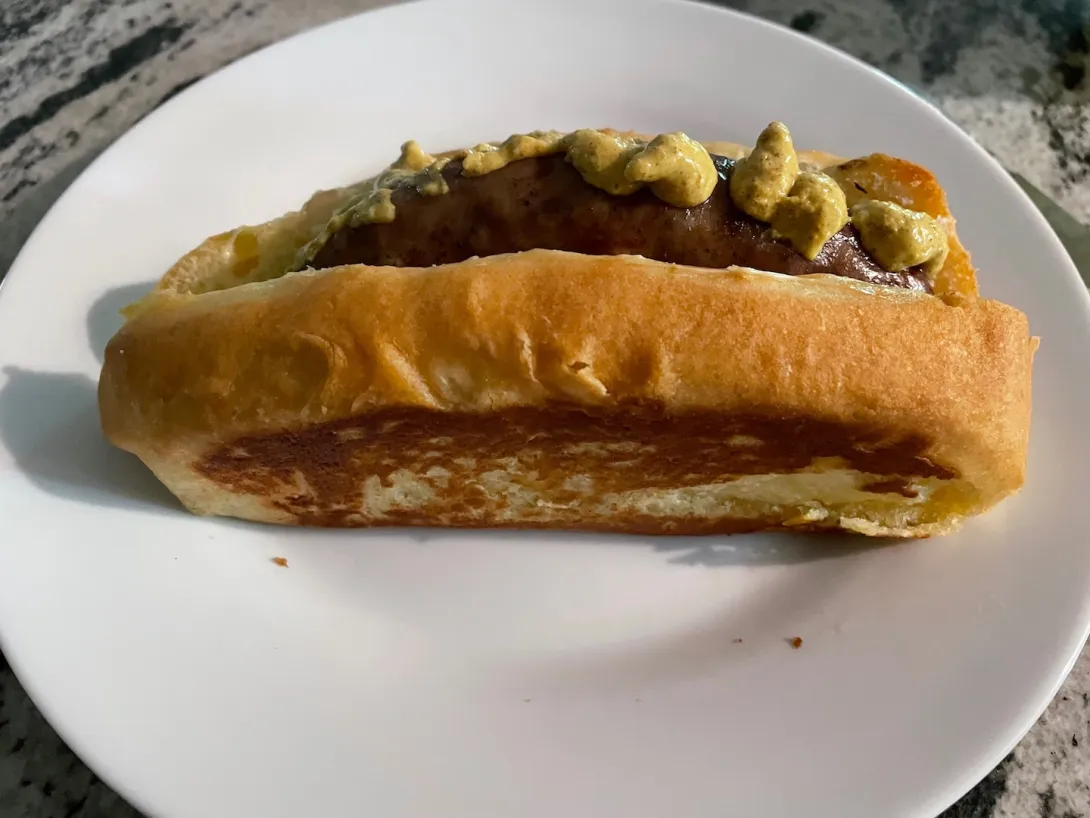
July 4th is also known as Independence Day here in the good ol’ US of A. The day we declared our freedom from tyranny of a different sort rather than today’s nut jobs that rule by decree It’s celebrated with flags, parades, and picnics which must include hot dogs 🌭. Most grocery store buns are perfectly adequate for holding the tubular mystery meat and mustard but this version of a New England bun is a definite upgrade so much so that it is traditionally used for lobster rolls. I also use them for things like chicken salad and the same recipe can be used for hamburger buns.
Heavy Hot Cross to Bear
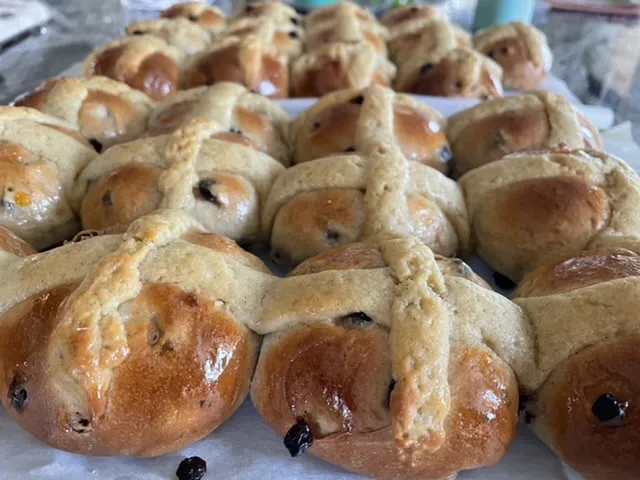
My attempt at Hamelman’s Hot Cross buns from his Bread book. I made these on previous Easter’s and they were always well received. One of the reasons I like his version is because the crossing paste is extra tasty. It is made with butter, sugar, egg, vanilla, lemon zest and flour. I am not going to post his recipe so buy the book. The recipe makes enough paste for four dozen buns and since I was only making two dozen and I didn’t have a smaller tip, I piped it on thick.
One lump or two
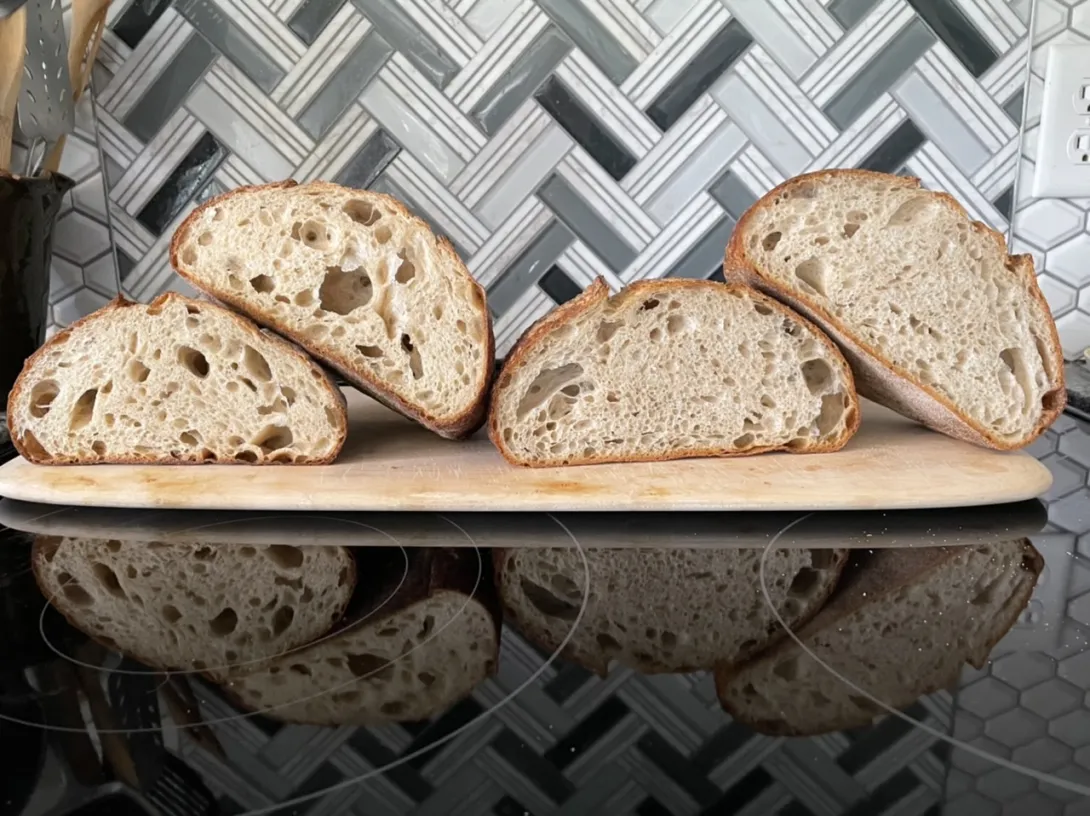
A follow up on a sweet stiff leavain bread after the first attempt produced a decent loaf but with large mysterious cavities in the crumb. For comparison I used my usual country bread recipe and did a second control version with the normal levain minus the sugar. Both doughs got the same autolyse and coil folds and a 4 1/2 hour bulk ferment.
Sweet levain 1st attempt
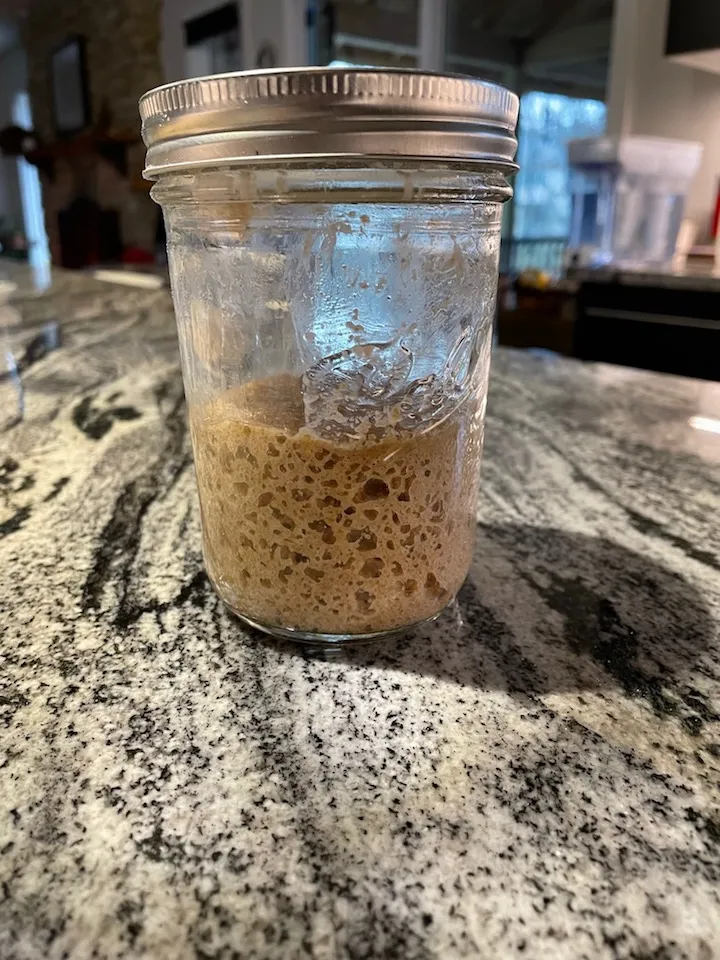
I was intrigued by Benitos recent bakes with a levain that contains brown sugar and decided to give it a go. It seemed to be a novel approach worth looking into. With many bakers around here pursuing Alt-sourdough lately I am surprised no one else has thrown their hat into the ring. Perhaps it turns away the purist or it's an aversion to sugar in the FWSY equation at least that was my thoughts.
Tales from the other Dark Side
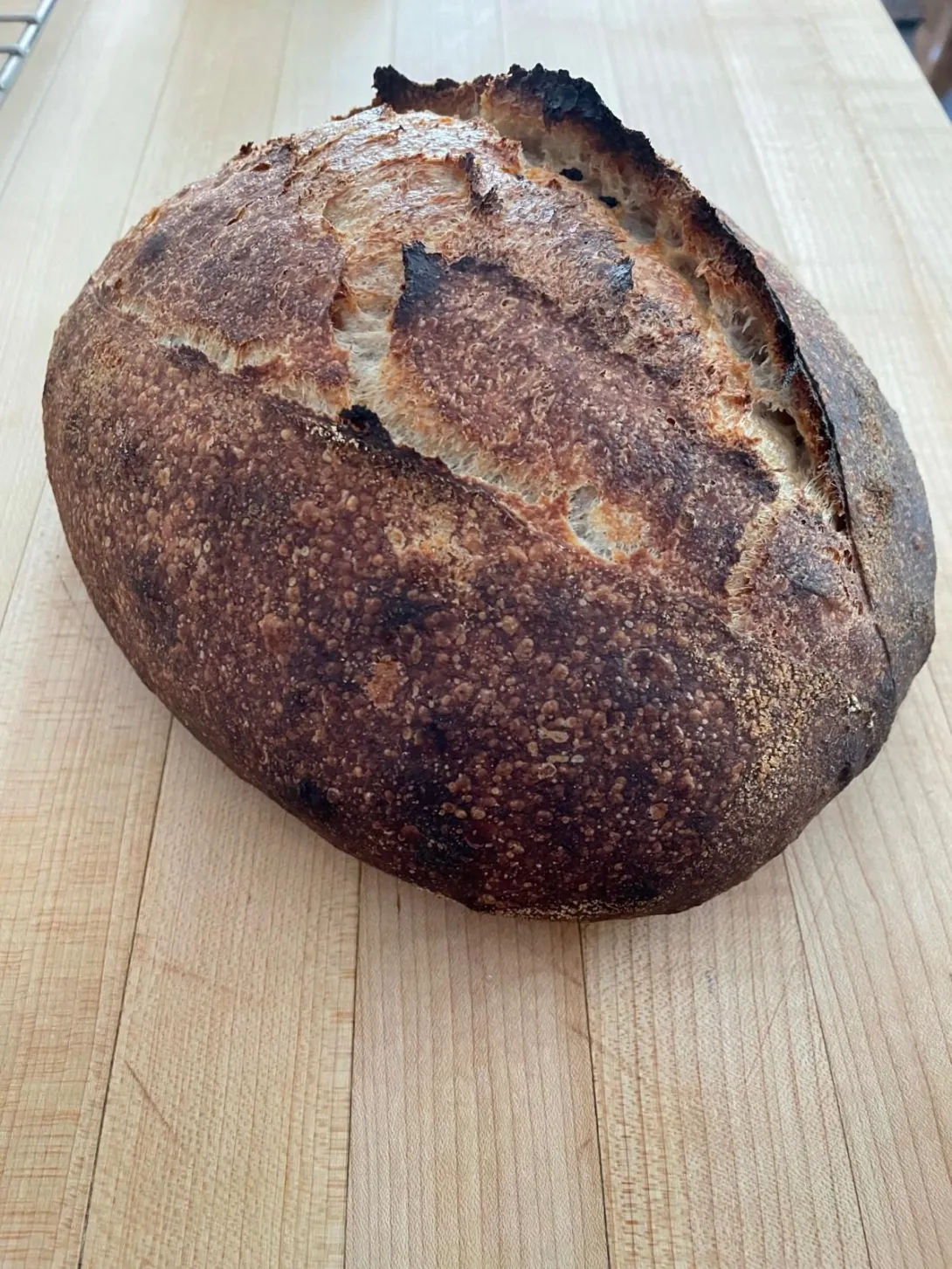
I haven’t had the time or reliable internet service to do much commenting or posting here because we recently sold our house and are in the process of relocating. We are temporarily staying in a small bunkhouse on a ranch for the summer. It has a small propane gas stove and that is the focus of this tale.
